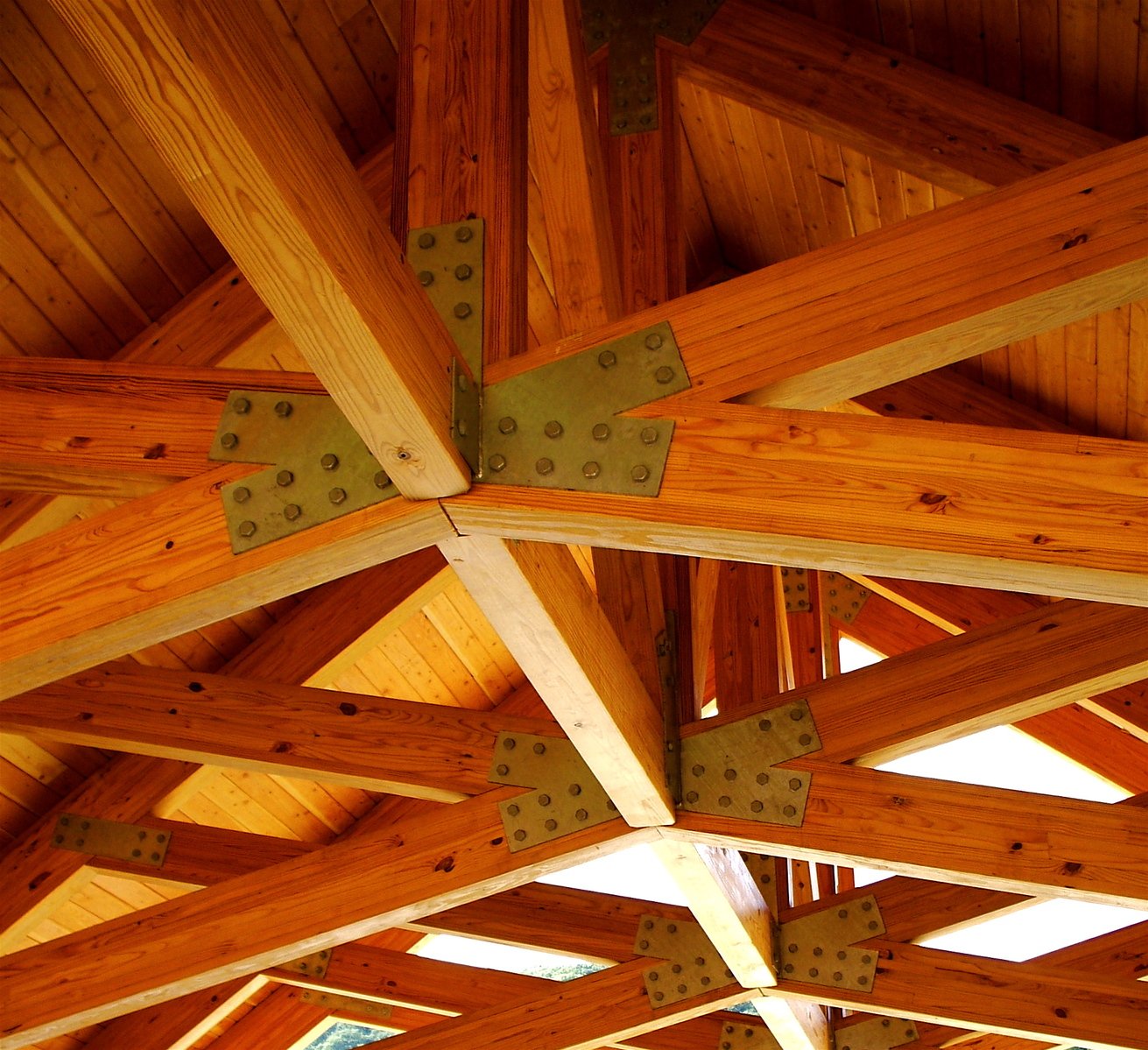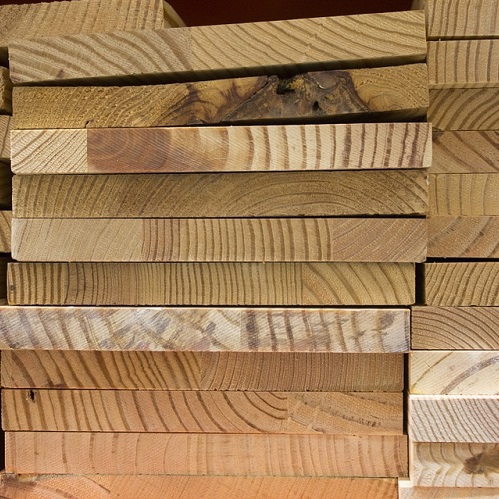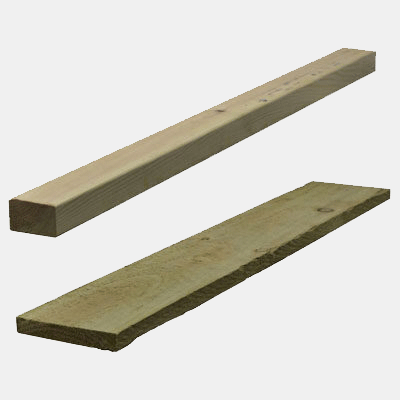If you’re looking for battens and timber for your next roofing project, you’ve likely come across the terms C16 and C24 timber.
But which is which?
And the confusion doesn’t end there:
To make things even more complicated, each type is available in myriad sizes. So, things can get very confusing very quickly.
The good news is:
At Roofing Superstore, we’re here to help!
Check out our comprehensive guide to find out everything you need to know about C16 vs C24 timber sizes and the main differences between the two types of timber!
Table of contents:
What is the difference between C16 and C24 timber?

First things first:
Let’s have a closer look at the two types.
C16 and C24 are both strength classes used for grading timber. In the UK, the grading of timber is specified in BS EN 338:2016 Structural timber – strength classes.
With that in mind, here are the main differences between C16 and C24 timber:
Firstly, C24 timber has a higher strength rating compared to C16 timber. The strength is determined by various factors, including the modulus of elasticity, bending strength and density of the timber.
As a result, C24 timber is commonly used in applications that require higher strength and structural integrity, such as roof trusses, floor joists, beams and other load-bearing structures. On the other hand, C16 timber is often used for non-structural purposes, including internal joinery, general construction and applications where lower strength requirements are acceptable.
Secondly, while both types can have knots, C24 timber allows for smaller and fewer knots compared to C16 timber. In case you’re wondering, the size and location of the knots can affect the strength and load-bearing capacity of the timber.
Thirdly, C24 timber is typically straighter and has fewer deviations or twists than C16 timber. Straightness is an important factor for structural applications, as it affects the stability and performance of the timber components.
Want to find out more about C16 vs C24 timber as well as other types, such as CLS timber? Check out our dedicated guide!
C16 vs C24 timber sizes

Good builds start with the right product – and the right size.
Now that we have a clear idea of the main differences between the two types of timber, let’s find out what sizes are available here at Roofing Superstore!
47 mm Planed Carcassing C16 Regularised 4 Eased Edges Treated Timber Batten & 47mm Planed Carcassing C16 Regularised 4 Eased Edges Timber Batten
This is a versatile pressure-treated timber batten, crafted from kiln-dried softwood. It’s suitable for a wide range of construction projects, both indoors and outdoors. The pressure-treated option provides greater protection from fungal and insect attacks.
| Thickness | Width | Length |
|---|---|---|
| 47mm | 100mm | 3.0m |
| 47mm | 100mm | 3.6m |
| 47mm | 100mm | 3.8m |
| 47mm | 125mm | 3.0m |
| 47mm | 125mm | 3.6m |
| 47mm | 125mm | 3.8m |
| 47mm | 150mm | 3.0m |
| 47mm | 150mm | 3.6m |
| 47mm | 150mm | 3.8m |
| 47mm | 175mm | 3.0m |
| 47mm | 175mm | 3.6m |
| 47mm | 175mm | 3.8m |
| 47mm | 200mm | 3.0m |
| 47mm | 200mm | 3.6m |
| 47mm | 200mm | 3.8m |
| 47mm | 225mm | 3.0m |
| 47mm | 225mm | 3.6m |
| 47mm | 225mm | 3.8m |
75mm Planed Carcassing C16 Regularised 4 Eased Edges Timber Batten & 75mm Planed Carcassing C16 Regularised 4 Eased Edges Treated Timber Batten
This is a multi-purpose batten made from kiln-dried softwood. Suitable for use in a wide variety of indoor construction projects, it’s perfect for floors, walls and roof joists. The pressure-treated option provides greater protection from fungal and insect attacks.
| Thickness | Width | Length |
|---|---|---|
| 75mm | 100mm* | 3.0m* |
| 75mm | 100mm* | 3.6m* |
| 75mm | 100mm* | 4.8m* |
| 75mm | 150mm | 3.0m |
| 75mm | 150mm | 3.6m |
| 75mm | 150mm | 4.8m |
| 75mm | 200mm | 3.0m |
| 75mm | 200mm | 3.6m |
| 75mm | 200mm | 4.8m |
| 75mm | 225mm | 3.0m |
| 75mm | 225mm | 3.6m |
| 75mm | 225mm | 4.8m |
*75mm Planed Carcassing C16 Regularised 4 Eased Edges Treated Timber Batten only
75mm Planed Carcassing C24 Regularised 4 Eased Edges Treated Timber Batten
This strong, highly durable solution is typically used in structures where significant load-bearing support is necessary.
| Thickness | Width | Length |
|---|---|---|
| 75mm | 100mm | 3.6m |
| 75mm | 100mm | 4.8m |
| 75mm | 150mm | 3.6m |
| 75mm | 150mm | 4.8m |
| 75mm | 200mm | 3.6m |
| 75mm | 200mm | 4.8m |
| 75mm | 225mm | 3.6m |
| 75mm | 225mm | 4.8m |
Kiln Dried C24 Regularised Treated Timber
This is a premium solution suitable for use in a wide range of both internal and external construction projects, such as stud walls, roofing joists and decking.
| Thickness | Width | Length |
|---|---|---|
| 47mm | 100mm | 3.0m |
| 47mm | 100mm | 3.6m |
| 47mm | 100mm | 4.8m |
| 47mm | 150mm | 3.0m |
| 47mm | 150mm | 3.6m |
| 47mm | 150mm | 4.8m |
| 47mm | 200mm | 3.0m |
| 47mm | 200mm | 3.6m |
| 47mm | 200mm | 4.8m |
Planed Carcassing C24 Regularised 4 Eased Edges Timber Batten
This timber batten is safe and comfortable to handle, making it a go-to choice for both DIYers and professionals working on timber structures which require excellent load-bearing support.
| Thickness | Width | Length |
|---|---|---|
| 47mm | 125mm | 3m |
| 47mm | 125mm | 3.6m |
| 47mm | 125mm | 4.8m |
Sawn Carcassing C24 Regularised 4 Eased Edges Timber Batten
This type is suitable for use in ceilings, walls and floor joists. It’s also typically used to create timber structures in outdoor environments, such as decking frames. It benefits from ease of handling.
| Thickness | Width | Length |
|---|---|---|
| 47mm | 175mm | 3m |
| 47mm | 175mm | 3.6m |
| 47mm | 175mm | 4.8m |
47mm Planed Carcassing C24 Regularised 4 Eased Edges Treated Timber Batten
This product is a suitable choice for various timber structures that require robust load-bearing support. It’s a durable and resilient material, providing excellent strength.
| Thickness | Width | Length |
|---|---|---|
| 47mm | 150mm | 3m |
| 47mm | 150mm | 3.6m |
| 47mm | 150mm | 4.8m |
| 47mm | 175mm | 3.0m |
| 47mm | 175mm | 3.6m |
| 47mm | 175mm | 4.8m |
| 47mm | 225mm | 3m |
| 47mm | 225mm | 3.6m |
| 47mm | 225mm | 4.8m |
75mm Planed Carcassing C24 Regularised 4 Eased Edges Treated Timber Batten
This premium timber batten is planed and regularised for a uniform and precise finish as well as pressure treated to provide protection from fungus and insect infestation. Safe to handle, it’s ideal for use in roof joists, floors, walls and many other applications.
| Thickness | Width | Length |
|---|---|---|
| 75mm | 100mm | 3.6m |
| 75mm | 100mm | 4.8m |
| 75mm | 150mm | 3.6m |
| 75mm | 150mm | 4.8m |
| 75mm | 200mm | 3.6m |
| 75mm | 200mm | 4.8m |
| 75mm | 225mm | 3.6m |
| 75mm | 225mm | 4.8m |
Final thoughts

And there you have it:
All the various sizes of C16 and C24 timber batten that are currently available.
The huge number of variations for each type and range means you’ll have no problem finding the right size for your next construction project – whether it’s indoors or outdoors, floors or roofs, ceilings or decking.
Just so that you don’t end up going down the proverbial rabbit hole when choosing:
Keep our C16 vs C24 size guide handy, and you’ve got nothing to worry about!
















